#how to do kapalbhati
Text
youtube
Kapalbhati for Better Digestion | Meditate With Me | HT Lifestyle
Last week has been a terrible one for me. My stomach felt bloated and no matter what I was eating, it just didn’t help. I felt quite uneasy and restless. I reached out to my friend who is also apparently a yoga teacher and she told me about some meditation techniques that help with digestion. I tried them and it did work. Today in “meditate with me”, I will show you how Kapalbhati is beneficial for better digestion.
#kapalbhati#meditation#indigestion#meditationtips#HTLifestyle#ht lifestyle#youtube#kapalbhati pranayama#how to do kapalbhati pranayama#kapalbhati pranayama for beginners#kapalbhati pranayama benefits#kapalbhati for beginners#kapalbhati for belly fat loss#kapalbhati pranayam#kapalbhati benefits#how to do kapalbhati pranayama for beginners#how to do kapalbhati#kapalbhati baba ramdev#meditation tips#meditation for beginners#meditation for better digestion#yoga#health tips#health#fitness#meditate with me#Youtube
0 notes
Text
Yoga For Stress Relief - Poses & Pranayama Techniques

Yoga continues to occupy an important part of holistic wellness. One of the ancient healing practices is believed to aid in physical, mental, and spiritual well-being. Those who develop a regular yoga practice, often boast stronger immunity and reduced stress. Along with the asanas physical poses, and breathing techniques, meditation is also considered worth doing. You will be able to learn the practices listed above as a part of the 200-hour yoga teacher training in Rishikesh.
Most yoga enthusiasts and professionals boast of reduced stress and anxiety. Such individuals are relaxed, in the face of hurdles and opposition. Yoga is a healing modality that affects the nervous system and also helps release physical knots. You will also feel your emotions and tensions being in control if you engage in yoga continuously. It mainly helps in releasing endorphins or happiness hormones. Yoga also teaches one to live in the present moment.
So, now you know how yoga can reduce stress in your life. However, that is not all, as you need to know what practices you must perform as a part of a yogic lifestyle.
Yoga Poses For Stress Relief
There are a few yoga asanas, which you can practice to reduce stress and tension. You should read about them here.
Cat-Cow Pose or Marjaryasana/ Bitilasana

This is an asana or pose, which allows you to connect your breath and the movements. You have to sink your abdomen and lift it simultaneously, in the course of practice.
Child Pose or Balasana
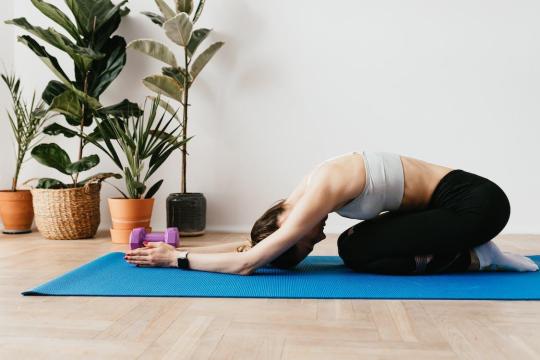
This is another asana, which anyone can practice. You can focus inward and also get your lost energy back if you practice this asana regularly.
Viparita Karani Asana

This is a legs-up-on-the-wall pose, which provides deep relaxation. The asana practice also helps in boosting the flow of lymph and blood circulation, as a result.
Corpse Pose
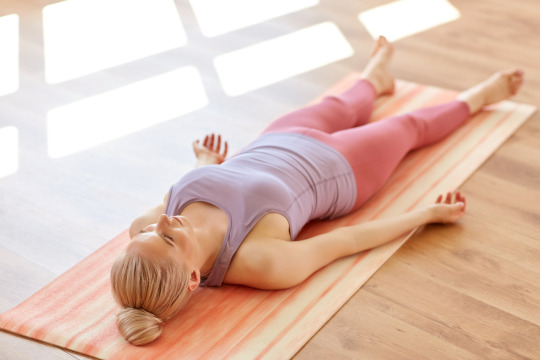
Also called Savasana, this is a deeply relaxing pose, which you can do after a strenuous yoga session. In this pose, you need to focus on breathing, to allow the body to enter the resting phase.
Pranayama for Stress Relief
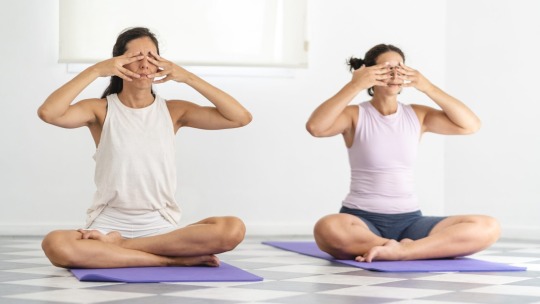
Pranayama or breathing techniques are considered the most important practice and are known to alleviate stress and tension. You will learn about such techniques in detail in the yoga school in Rishikesh. Breathing techniques can help improve your sleep quality and also encourage awareness. Some of the most popular Pranayamas are given below.
Nadi Shodhana –You can do this as a part of yoga or meditation. This practice also helps in quieting your mind. You can practice two types of alternate breathing, one in which you have to retain your breath, and one in which you do not have to retain breath. The former is called Nadi Shodhana. This is one of the best practices, which reduces anxiety. Additionally, it also promotes overall well-being.
Kapalbhati – In this form of Pranayama, the inhalations are passive, whereas the exhalations are more active. This style of forced exhalation helps in reducing stress and also boosts brain function. It also improves digestive power.
Bhastrika – You can increase the oxygen levels in your body, by practicing Bhastrika Pranayama. It is the process of fast inhalation and fast exhalation. You can do it, whenever your body needs energy.
Bhramari - Also called Humming Bee breath, it is a calming Pranayama. During exhalation, practitioners make a humming noise. It resembles the sound of a bee. Anyone of any age group or gender can practice Bhramari.
Ujjayi - It is a breathing technique, which helps in calming the brain. It is also called Ocean breath. It is a soft whispering breath, in which the sound of the wind can be heard.
Meditation as a Part of Yoga
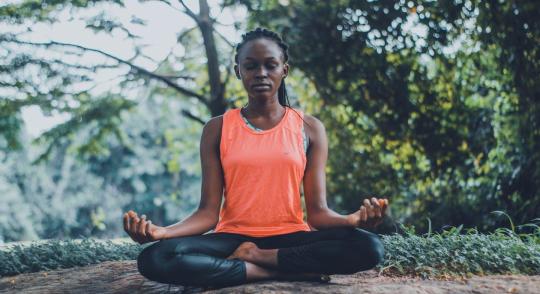
Meditation is an important part of yogic practices, which can elevate your experience. It is one of the easiest ways to increase your focus and stay in the present moment. You can learn various mantras like ‘Om’ and ‘Gayatri Mantra’, to help create an impactful experience.
Guided Meditation is a form of meditation, in which the teachers will guide you through the journey, with words. Having an experienced teacher enhances the experience.
You can also engage in Silent Meditation, in which you do not require any external tools. Always aim at learning such divine practices, under expert guidance.
Conclusion
Thus you can very well understand that yoga plays a huge role in releasing negativity. One will be able to become more aware, and also practice detachment. Negative thoughts will stop affecting you, as a result. Yoga can help in reducing cortisol levels, and can also give relief from Asthma and allergies. It can also contribute towards your spiritual growth. Yoga has multiple benefits, so you must start it now to get the above benefits.
1 note
·
View note
Text
https://www.mywakeup.in/blog/Health/benefits-of-kapalbhati-and-how-to-do-it
Benefits of Kapalbhati and How to Do It - Wakeup India
Discover the numerous health benefits of Kapalbhati Pranayama, an ancient yoga technique. Learn how to practice it for mental and physical well-being with Wakeup India.
0 notes
Text

All About Kapalbhati Benefits: Balance Your Body and Mind
Do you want to know how practising kapalbhati benefits your health? Continue reading to learn all about it.
0 notes
Text
0 notes
Text
How to do Kapalbhati- a step-by-step guide
Kapalbhati, also known as kapalbhati pranayama, is a fast breathing technique that reduces stress and enhances general wellness.
The name is derived from the Sanskrit words 'Kapal' for forehead and 'bhati' for sparkling. It is thus named because performing Kapalbhati can enhance both your physical and mental health.
This yoga technique ranges from advanced to intermediate. Your body is detoxified, extra carbon dioxide is eliminated, your core and chest are strengthened, and your nervous and circulatory systems are given energy.
It is advised not to begin with Kapalbhati if you are brand new to breathing exercises.
Learn the fundamentals of breathing before practising Kapalbhati by clicking the link below.
#Kapalbhati tips for beginners#Physical health benefits of Kapalbhati#benefits of Kapalbhati#Breathing technique of Kapalbhati#posture of Kapalbhati#Kapalbhati yoga technique#Kapalbhati
0 notes
Text
The Exercise Way to Remove Gallbladder Stones in Singapore
Do you have gallbladder issues? Are the gallbladder stones in Singapore worrying you? While there are no scientific proof that exercises can help remove the gallstones, you might be able to reduce the impact. The one simple mantra to remember through it all would be ensuring you don’t overdo the exercises. You should identify ways to relieve the body’s issues and find a way to reduce the risk.
Let’s look at how your inactive body state or low level of activity can impact the gallbladder.
1. Obesity increases your chances of getting gallstones and a bad gallbladder.
2. If you are suffering from high cholesterol or there is bile in there, you might also face gallbladder issues.
3. High BMI also leads to gallstones, which can impact the gallbladder if left untreated.
Basically, if you don’t work on the issues that your body is facing, you might fall prey to gallbladder issues.
There are a few exercises that you can do on a regular basis, which can help with the activity. It will also reduce the risk of gallbladder removal Singapore surgery.
The Top Five Exercises to Reduce Gallstones
From pranayama to yoga poses, there are several ways to reduce gallstones and resolve the gallbladder issue. Kapalbhati is an excellent way to soothe the digestive system and reduce the pain. If you are planning to take the exercise route, you should always consider consulting a doctor and exercise expert before going ahead. Here we will discuss the five top exercises you should perform.
1. The first exercise is the Narayana pose. This is where the body gets to stretch and move the organs. It will also help in enhancing the functions of the organs. In this yoga pose, you should lie on the floor. Stretch your arms and keep them behind the back. Now, turn to the left, raise your head with the support of your hands. Put the right foot over the left one, and stay in this position for 10 counts. Change the leg and arm and repeat the counts.
2. The cobra pose or Bhujangasana is another great way to reduce your gallbladder risk. In this asana, you will be lying on your stomach with palms on the ground below the shoulder. Lift the chest, and pull your shoulder back. Make sure you are inhaling while performing this asana. You should stay in this position for 10 counts to reduce the chances of gallbladder stones in Singapore
3. Supta Matsyendrasana is where you lie on the mat with your knees bent. In this asana, your right and left leg are put to task. Your hips are also stretched and you can also lower the neck pain. This is an excellent asana that can help you in reducing gallbladder risk
4. Shalabhasana is when you follow an asana while lying on your stomach. You get to work on your knee as well during this pose. Make sure to follow through 10 counts for each side
5. Dhanurasana is one of the most flexible yet incredibly smooth poses that can ensure you don’t need to go through gallbladder removal Singapore surgery.
0 notes
Text
Pranayama For Asthma: 3 Types For Pranayama For Asthma Patients - Activ Living
3 Pranayamas For Asthma Patients - Pranayama is beneficial for asthma patients if done regularly. Click to know how to do pranayamas like Kapalbhati for asthma for a ailment free future.
0 notes
Text
How To Learn Kapalbhati Pranayama Works ?
Kapalbhati pranayama is a breathing technique in the yoga that is said to have a number of benefits, including improving digestion and circulation, reducing stress and anxiety, and improving overall well-being. Here's how you can learn to practice kapalbhati pranayama :

Find a comfortable and quiet place to sit, with your back straight and your feet planted firmly on the ground.
Begin by taking a few deep breaths to calm your mind and relax your body.
Exhale forcefully through your nose, contracting your abdominal muscles as you do so.
Inhale passively through your nose, allowing your abdomen to expand.
Repeat this process for several minutes, gradually increasing the speed and intensity of your exhales as you become more comfortable with the technique.
As you practice, try to focus your attention on your breath and the movement of your abdomen.
When you are finished, take a few deep breaths and allow your body to relax.
It's important to note that kapalbhati pranayama should be practiced under the guidance of a trained yoga instructor, especially if you have any health concerns. It's also important to listen to your body and stop if you feel uncomfortable or experience any pain.
Practicing Kapalbhati on regular basis leads to a shining face with inner radiance. Kapalbhati is a highly energizing abdominal breathing exercise.
You can learn Kapalbhati Pranayama by click on below mention link.
youtube
1 note
·
View note
Text
0 notes
Text
Healing Your Chakras: Balancing Your Seven Chakras
We live in a society where tuning in with our mental health is equally important as doing any form of physical exercise. When our chakras become unbalanced or blocked, we feel demotivated, restless, and tired. Being able to identify and heal all your 7 chakras is a powerful way to tune back to your energetic health. It can help in balancing out a healthy lifestyle for you and your family. So, if you are curious to know how to heal your chakras then keep on reading.
Rebalance Your Seven Chakras with These Rituals
1. Root Chakra - Red
Located at the base of the spine, it affects your physical survival instincts, safety, and security. To heal your root chakra, you need to let go of your fears by replacing negative thoughts with positive ones using affirmations. For this chakra healing, you can follow any of these steps:
Warrior I and II yoga postures,
Walk barefoot on the grass,
Live in the present,
Organise your space to feel safe,
Wear a chakra bracelet.
2. Sacral Chakra - Orange
Located below the navel, it relates to creativity, self-expression, and sexuality. You must release any sort of guilt or blame you might be holding by forgiving yourself. For this chakra healing, here are the following steps:
Pigeon or reclined figure 4 yoga postures
Meditation holding chakra stones
Activities like dancing, drawing, writing, sports, etc
3. Solar Plexus Chakra - Yellow
Located in the stomach area, it affects our personal power and purpose in life. For healing your solar plexus chakra, you have to let out all your problems and disappointment which is causing this blockage. For this chakra healing, this is the complete set of steps where you can follow any one of them:
Do kapalbhati or breath of fire yoga
Focus on goals.
Take risks and challenge yourself to do better
Always try to grow
Do a core work
4. Heart Chakra - Green
Located at the center of the chest, it is associated with love, compassion, and self-acceptance. To heal this chakra, you must release all your sadness and loss. Let your pain out. Try saying affirmations such as “I give, and I will receive love unconditionally” These are some of the steps you can follow:
Roll your shoulders down & try to keep your heart open
Donate or volunteer and give love to others
Invite new energies into your life and burn sage for love cleaning of the past
5. Throat Chakra - Blue
Located at the throat, it is connected to communication and expression. To heal your chakra, you must let go of the denial and lies. You must accept yourself the way you are. These are some of the following steps:
Do Ujjayi breath
Sing to yourself
Get a singing bowl and hear the sound
Focus your attention on the third eye
Speck the inner truth
Be mindful of what you speak
6. Third Eye Chakra - Indigo
Located at the center of the forehead, it relates to intuition, physic ability, and highest vision. To heal your chakra, you can release illusions within yourself. You must trust yourself, rely on your intuition, and make firm decisions. These are some of the following steps to follow:
Self-Meditation, journaling thoughts, and analyzing dreams
Play a singing bowl and shift the focus on your third eye
Do visual activities, develop your clairvoyance, and ground yourself
Burn sage for healing to let go of the stagnant energy and blockages
7. Crown Chakra - Violet
Located at the crown, it relates to higher consciousness and spiritual enlightenment. You need to meditate if you want to heal your crown chakra. Calm and relax your mind, release earthy attachments where you will be able to connect to the higher consciousness. Follow these steps:
Visualize and meditate
Try chanting “OM”
Do spiritual activities and practice
Pray
Notice your connection and appreciate the little things
This was about rebalancing your chakras. If you want any help regarding chakra healing in Delhi or looking to spiritually connect with the inner self, join Kripjyoti Nisha Sinha’s session today. Visit Cosmicx Healing Art website for more details.
Originally posten on CosmicxHealingArt
1 note
·
View note
Text
Daily yoga: Start on a simple practice to feel great every day!
Do you feel the need to relax? Most people have busy lives and have almost no time to relax. In their busy lives, people are on the run from the moment they wake up to the time they retire for the day. How can one relax when the whole day is spent in meeting deadlines, pushing schedules, getting to the office and back home with no time left for even having your meals?
In addition, there are different types of stresses that one has to deal with. From financial problems to health problems in family, from lack of emotional support to work pressure, stress can creep into our lives easily. This stress can tire us physically as well as mentally and must be done away with. To get rid of this stress and live a healthier life, practicing yoga everyday can be very helpful.
Yoga for Relaxation
With its deep-rooted philosophy of uniting body and mind, yoga is a great stress buster and certain asanas do just that – fight stress! The pranayamas and asanas clear your mind, ease the muscles, and fill you up with positive energy. Yoga also improves the flow of blood, balances the body and reduces toxins in your body. Further, it improves immunity and makes the body more flexible.
These following yoga poses can help reduce stress and energize you every day:
Ardha Chandrasana: This pose benefits the lower back, abdomen and chest by stretching and balancing the body.
Adho Mukha Svanasana: This pose helps alleviate backache, relieves the body of stress and mild depression, and also revitalizes the body.
Hastapadasana: This pose works on the hamstrings, spine and abdominal organs. It also improves flow of blood to the brain, thus refreshing you.
Shavasana: This pose relaxes the body and calms down the mind.
Pranayamas for Relaxation
Voluntary regulated breathing or pranayama is basically mastering the mind through control over breath. Pranayamas are also highly effective in eliminating stress from the body.
The following pranayamas may be practiced to get rid of stress:
Kapalbhati pranayama: Also known as the Skull Shining Breathing technique, this pranayama energizes the body, eliminates stress, and also helps lose weight.
Nadi Shodhan pranayama: The Alternative Nostril Breathing technique helps clear subtle energy channels and improves the flow of energy. An effective stress eliminator, this pranayama also helps calm the mind and makes it centered.
Sheetali pranayama – This pranayama induces muscular relaxation, soothes the eyes and also eliminates bad breath.
Sheetkari pranayama – This pranayama purifies blood and also keeps blood pressure in check.
Bhramari pranayama –The Bee Breath technique creates a soothing effect on nervous system. It also reduces anger, anxiety, insomnia and blood pressure; thus relieving the body of stress and cerebral tension.
Yoga Nidra
Yoga Nidra is basically sleeping but with total awareness! It is a sleep in which we do not lose our consciousness. Due to this unique feature, you experience a much greater physiological rejuvenation and relaxation as compared to normal sleep. It also helps cure stress related disorders such as depression, hypertension, digestive problems and asthma.
In general sleep, that we are accustomed to, we do not unburden ourselves totally. This is because we carry our day-to-day tensions, frustrations, anxiety, pain and turmoil into our sleep also. This results in a shallow sleep and we are not fully refreshed and rejuvenated when we wake up in the morning.
Practicing daily yoga keeps the body healthy, the mind relaxed and helps you take on the world with new enthusiasm. So, refresh yourself every morning with these asanas and pranayamas and see the difference for yourself!
0 notes
Photo
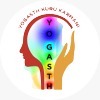
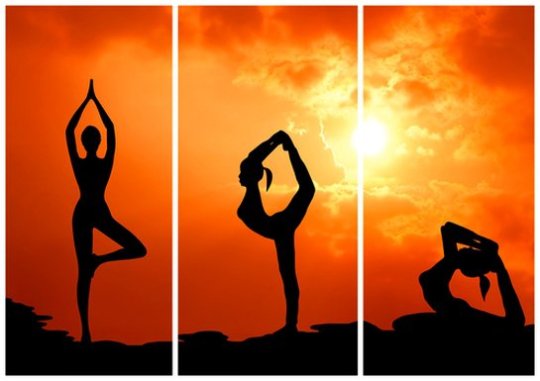
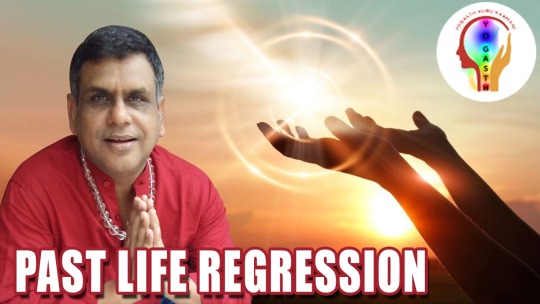

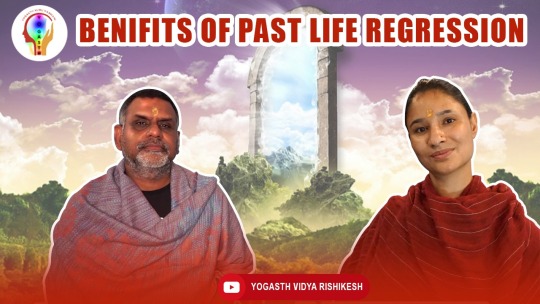

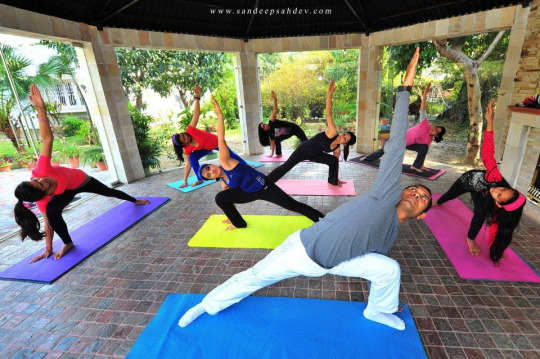
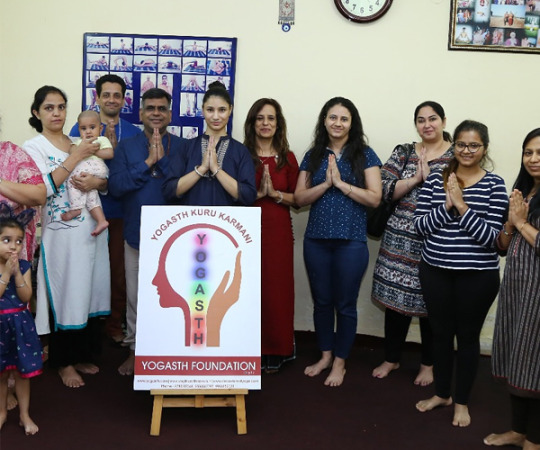
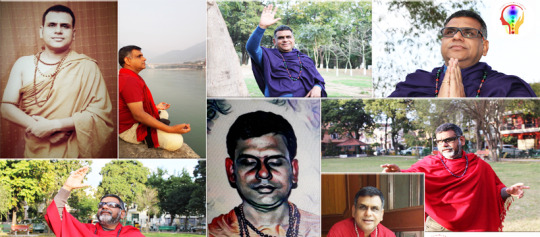
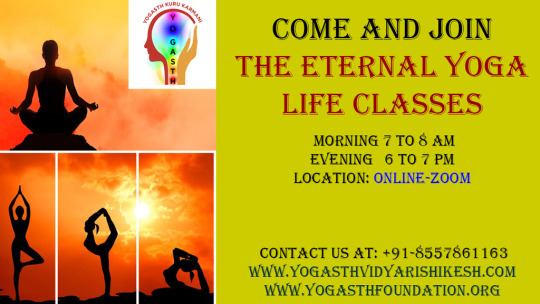
ABOUT SRI YOGASTH VIDYASHALA
A Life Transforming Academy
Under the aegis of Yogasth Foundation Sri Yogasth Vidyashala is a movement, as well as an academy of spiritual sciences, run under the guidance of yogi Buddhadeva.
It is an international dynamic spiritual and educational institution of yoga, tantra, esoteric and mystic divine kriyas, meditations, healings, and most spiritual sciences. Sri Yogasth Vidyashala is also a virtual academy of Divine Energy Life Coaching and many other spiritual and practical ONLINE courses and programs. The headquarters of Vidyashala is RISHIKESH India; the international capital of Yoga.
#yoga#yogaeverywhere#yogaeverydamnday#yogawear#meditation#meditative#healing#reiki#reiki youtube#reiki training#past life regression#past life reading#kundalini#kriyayoga#hatha yoga#pranayam#kapalbhati pranayam#pranayam for covid positive#how to do pranayam#health#health & fitness#life coaching#distance healing#wellness#spiritual#spiritualism#spiritualgrowth#spiritual music#spiritualart
0 notes
Text
Is there a Solution to Americas Weight Problem?
More than half of all American adults are overweight and it's hard to turn on the TV without encountering a commercial for another weight loss remedy. This growing epidemic of obesity has not spared even the young school children who are showing high blood pressure, and other psychological and social problems related to overweight.
Overweight is not only a personal problem but has become a national crises that drains our financial resources. Over 30 billion dollars are spent annually on weight reduction efforts in the United States, and the 30 billion dollar figure does not include the medical costs resulting from obesity-related diseases. For example, approximately 100,000 coronary by-passes are performed yearly at an average cost of over $70,000 each (i.e. $7 billion per year), and about 1,000 people in the U.S. alone die everyday of cancer.
Weight control can help with many of the health-related problems which can reduce insurance and medical bills; and help solve the national health care crises.
Many of us know that to maintain a desirable weight is good, not only in terms of good looks, but more importantly, in terms of good health. However, the relationship between proper weight and health is more complicated than you think. The scales and scientific methods for calculating overweight and over all fat amount are important, but more important in terms of health is where you carry the fat more than how much extra fat you carry. One of our aim is to tackle this problem, and to provide an effective technique to lose weight. Overweight or obesity is Probably one of the most important dietary problems talked about and written about today.
Weight problems are rare in populations where a lot of natural fruits, vegetables and whole grains are consumed. But excess weight is a common problem in developed countries like the United States, where the progress of scientific and technical development has led to the common use of processed and refined foods, as well as use of growth hormones for profitable animal farming. One of the obvious effects of this move is the high caloric intake resulting from the decreased volume of processed foods. In other words, over-consumption of calories to fill the stomach, which leads to an overweight. Traces of growth hormones from farm animals is also a contributing factor for the overweight problem.
Not only the diet but life style, whether sitting on a computer or watching TV or using a car, is equally responsible for overweight crises. The problem is a new one; never before has man had so wide a choice-or so regular a supply-of good food; or such easy access to vehicles that even natural exercise such as walking requires a special effort.
All kind of diets, exercise programs and other solutions have not worked even though it has become a billion dollar industry. If it did, we will not have all these grim statistics and over-weight people walking around.
I have known whatever is to know about weight, health, yoga, meditation from East as well as from West. Because I have an advanced degree in science in the west at Yale University in USA and had my earlier education in the East at Punjab University in India. I have written 12 guides combining Eastern and Western approach to health from happiness to longevity.
However, I could not reduce even 5 pounds with typical diet and exercise. Look below my daily eating habits and other life style that many of us including medical and scientific experts can call ideal. Here it is my typical day:
After getting up in the morning:
1 cup of tea with no sugar but little skim milk
Breakfast: ¼ cup Oatmeal cereal
Snack: Apple, Banana or other fruit
Lunch: About one cup Frozen Vegetables microwaved, plus egg-white from boiled egg.
Evening Snack: Mostly Tea only [rarely a bran muffin].
Super: Two whole wheat (or millet) chapattis equivalent to about 2 slices of bread. Vegetable cooked Indian style with spices and little oil.
Drink plenty of water, 2 cups skim milk, no soda, no alcoholic drink (except in a company or at a party).
Exercise: About 5-10 minutes of yoga stretches in the morning. 3-4 miles walk in the evening.
This schedule is quite healthy and have kept me disease free, pain free, and youthful in all aspects so far in my 70s now.
You will wonder what is left to tell that can reduce weight and stomach after following the above schedule. I was thinking the same till I tried something very simple and very effective. It can be done anywhere, anytime and requires no special equipment. And this is not even any diet or vigorous exercise or some nutrient, vitamin, hormone, and drug that I am promoting.
Finally remember "your body is a temple of the soul and the holy spirit, a gift from God." Consider every day what you can do to Care for the Temple. With child obesity rates at national health emergency levels, it is time to treat those fat, unhealthy, undisciplined, drug infested bodies like a temple.
For More Free info about: Clean Colon; Time to kapalbhatise; What's so different about this Kapalbhati Technique that Works!; How does It Work for Weight Loss!; Supplemental Exercises to Boost Energy; Science behind Success of this program.
https://www.amazon.com/dp/B003T9UX9M/?tag=kindleboards-20
Author Dr. Dhillon: PhD West (Yale), fascination with yoga-spirituality East (Punjab University -- combined in 12 books. Dr. Sukhraj S. Dhillon is an eminent Scientist with numerous research publications in life sciences who studied at Yale University and served as a Professor at University in North Carolina. He has written more than a dozen books on topics of Health, Aging, Vegetarianism, Weight control, Stress-free living, Meditation, Yoga, Power of Now, Spirituality, Soul, God, Science, and Religion. His articles and books are a pointer to his line of thinking including current publication. He has been the President, Chairman of the board, and life-trustee of a non-profit religious organization and has expressed his views in the congregation and at international seminars.
http://dpcpress.com/pa.html
Reference: “A Simple Solution to Americas Weight Problem” available from popular booksellers throughout the world including Amazon Kindle and Barnes & Noble.
https://www.amazon.com/Dr.-Sukhraj-S.-Dhillon/e/B004584DL0
http://goo.gl/XE97WR
1 note
·
View note
Text
10 Proven Healthy tips for better sleep - 3MEDS
We all crave for that long and relaxing sleep of minimum 6 to 8 hours. But many of us can’t even manage to sleep for even 2 to 3. A good sleep not only helps us to work better by increasing our productivity potential but also helps in balancing our emotional and physical health. Many researches have stated that our sleep patterns are directly linked with our body weight.

Lack of sleep can lead to several health issues:
It is no-brainer that sleep deprivation triggers our body and mind in many ways including –
Insomnia
Depression
Aging of skin
Irregular heartbeat
High Blood pressure
Lowers concentration level
Reduces problem solving capacity
In this Covid-19 pandemic time 3MEDS one of the best healthcare service provider in India is throwing light on this pressing topic and how we can improve our sleeping pattern by making some small changes in our day to day lives.
Ways to get better sleep:
Here are some simple yet effective steps that each one of us can inculcate in our routine.
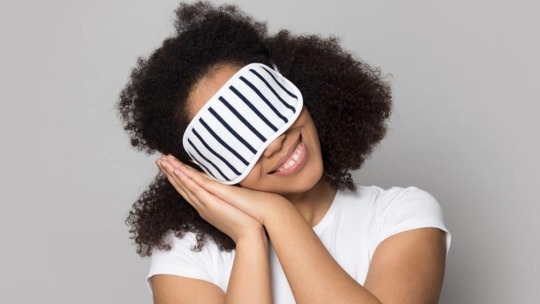
Maintain your sleep cycle: Irregular sleeping pattern is one the major reasons behind ill sleep which later turns into no sleep or commonly known as insomnia. If our work schedule is followed so religiously it’s high time we understand the importance of our sleep cycle. The circadian rhythm or natural sleep-wake pattern works like a body clock for our system if we are aware enough maintaining a sleep pattern isn’t that hard. Fluctuating one or two hours won’t break that rhythm but one shouldn’t totally change it. If your sleep cycle is regular you’ll feel much energized in the morning and won’t be cranky all day. So select a particular time and make that your bedtime. Try and stick to that, after couple of weeks you yourself will feel the change.
Integrate simple breathing practices in your routine: Introducing oneself to yoga pranayamas like- kapalbhati, anulom vilom pranayam and others will not only help you to breathe deeply but also help you to relax. One the major advantage of doing this regularly will improve your sleep quality and that’s where we have to work. Improving lung capacity, reduction in stress levels, lowering heart rate, increasing mindfulness are some the other benefits of it. Here is one video that will help you.

Create a healthy room environment: Your bedroom lighting directly affects your sleep as bright light will create hindrance. Our body secretes a hormone called Melatonin (More melatonin = more sleepy and less melatonin = less sleepy). Thus dim lights will promote you to sleep better and faster. Other things like comfortable bedding (mattress, pillows, even type of bed sheet cloth helps you to sleep better. So try and make sure your room is quite. Even soft and calming music will help you to sleep better. Make sure your room is cool and dark before you head towards your bed.
Practice meditation: Meditation is a relaxation technique where you separate yourself from all thoughts and stress that bugs you all day and night. It’s the best way to quite your mind and body. Meditation promotes all over well being. As meditation is the most effective tool to make you calm and healthy. This can be very helpful. Go on and watch this.

Regular exercise: In this hectic and busy lifestyle we get so involved in those mundane chorus and jobs that we forget to workout and make some room for ourselves. Exercising helps us in many ways and by the night you’ll feel that drop in energy which will surely help you to sleep. Try to incorporate 30 minutes of workout in your daily routine for at least 5 times a week. Even going for a walk after dinner will help you.
Avoid late night meals: Make sure there is at least 2 to 3 hours of gap between your mealtime and bedtime. Avoid consuming sugar and high carbs food items at night as it will increases your wakefulness.

Avoid stressing: Brainstorming and stressing over all those things in bed is one of the main reasons of not letting you have that beauty sleep. Lay in your bed, close your eyes, and try to shut those toxic thoughts so that you can sleep.
Avoid using your beloved Smartphone or laptop: As stated above on how melatonin works, that blue light emitting devices disrupts your sleep cycle before sleep.

Watch over your liquid intake: Drinking a lot of water before bedtime is a bad idea as it will increase your trips to washroom. Not only water but also avoid consuming coffee as caffeine disrupts your sleep clock and pushes it back for hours. Also avoid consuming liquor before your bedtime.
Take a bath before going to bed: A relaxing lukewarm water bath calms oneself down and helps draining all those worries and unnecessary thoughts away. Relax our body and mind before heading towards your bed.
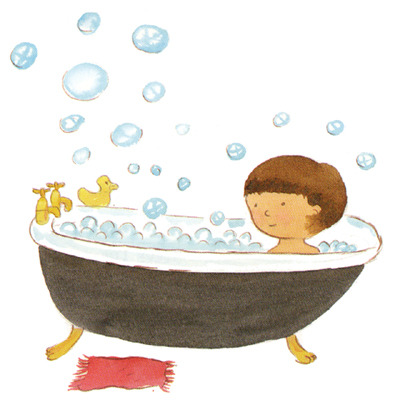
Conclusion:
As stated in one of the Irish proverbs “A good laugh and a long sleep are the two best cures for anything”. 3MEDS wishes you good health.
1 note
·
View note
Text
The 8 Limbs of Yoga
“Yoga is seeing life the way it is. – The Yoga Sutras of Patanjali”
I. Introduction
The word “Yoga” comes from “Yuj”which is a Sanskrit word meaning “yoking” or “union”. Therefore, yoga is all about fusion of mind, body, emotions, soul and spirit. Ashtanga or Raja Yoga or simply Eight Limbs [Ashta (eight) + anga (limbs)] of yoga are the eight steps to be followed towards a meaningful and purposeful life, hence, attaining a state of “purusha” or pure being. It is a method of practical spirituality which acts as a prescription for self-discipline, ethical and moral conduct, healthy lifestyle and acknowledging the spiritual aspects of the world around us. It acts as a means to progressive unification of consciousness and progressive purification of a human being.
Practicing the eight limbs can help us in better and deeper understanding of insights and intuition; nurture our inner calm balance to combat the outside circumstances and expand strength and resilience.
II. First Stage: YAMA or Discipline
This stage sets the ethical standards of integrity, our own behaviour and conduct. It deals with self-control and has 5 moral obligations.
a) Ahimsa or Non-violence – Our intentions, words and actions are scrutinized through the lens of compassion and self-awareness. Non-violence does not mean that one becomes an easy meat but to be benevolent and well equipped to deal with foxy schemes of the outside world. This also means that while practicing yoga asanas, one is respecting his/her bodily limitations and is patient and persistent in achieving a particular posture without getting frustrated.
b) Satya or Truthfulness – This talk about being truthful, dedicated, devoted and enthusiastic in whatever you do. It increases one’s authenticity and genuineness.
c) Asteya or Non-stealing – This means appreciating the concept of give-and-receive. We must not steal, cheat or be envious of others’ goodwill, affection, attention, property, money or goods.
d) Brahmacharya or Chastity – Understanding the things which adds up or drains out your vital energies and finally abstaining from them. A model approach to this concept is doing things in moderation and ensuring loyalty and fidelity in relationships.
e) Aparigraha or Greed lessness/ Detachment – A yogi must not be greedy to collect the postures; his main motive should be to attain perfection with constant practice. One must also practice detachment or letting go off things and accepting the changes.
III. Second Stage: NIYAM or Restraint
a) Saucha or Cleanliness – Maintaining the cleanliness of body, mind and soul by following simple practices like keeping the immediate environment tidy and clean, bathing, following proper diet etc.
b) Santosha or Contentment – Contentment means appreciation and gratitude for everything you have. Accepting the things around and concentrating on the good elements.
c) Tapas or Self Discipline – Tapas means to glow, shine, change and transform. It is practicing the art of channelizing our energies in the right direction.
d) Svadhaya or Self-study – It means self-studying, self-realization, self-awareness, self-inquiry and self-reflection. One has to be committed to the process of learning.
e) Ishvara Pranidhana or Surrender – It is devotion and dedication to the supreme power. It is a powerful state where the mind is courageous enough to let go the selfish desires and ego.
IV. Third Stage: ASANA or Posture
The Asana or posture should be Sthira (steady, strong, compact, static and courageous) and Sukham (comfortable, joyful, good, gentle and virtuous). Practicing Asanas makes the body master the art of sitting in meditation for long periods. It increases our concentration and discipline. We are familiar with a lot of asanas already as we have been practicing the basic Hatha yoga.
a) Forward Bends – They are a give a good stretching to the hamstrings and calve muscles, improved digestion, relieves stress, anxiety, headache and insomnia.
b) Back Bends – They stretch the chest and lungs, stimulate thyroid and pituitary glands, therapeutic to asthma, back pain, infertility and also strengthen the arms, legs, abdomen and spine.
c) Balance Postures – Improve the balance of the body, strengthens legs and ankles.
d) Twists – They provide a gentle massage to the abdominal muscles and organs, stimulate brain, relieve back pains and hip pain and strengthen the spine.
e) Inversions – They are good for digestion, therapeutic for asthma, infertility and insomnia, relieve the symptoms of menopause and calm the mind, thereby reducing stress.
V. Fourth Stage: PRANAYAMA or Breath Control
Pran means life or vital energy and Yama means control, therefore Pranayama means conscious awareness of breath or control of breath. By working on the way we breath, we can mould our minds. E.g. Ujjayi Breath or Victorious breath is a combination of both asana and pranayama; Nadi shodhan pranayama, Kapalbhati etc.
The first four stages were focussing on the body, breath and improving our personality. Now moving towards our inner selves, we have the next 4 limbs as follows.
VI. Fifth Stage: Pratayahar or Sense-withdrawal
Pratayahar teaches us to draw our sense inwards and be aware of our internal landscape. When we are in Savasana, we are silently observing how intensely we have worked out, how our body is reacting to reacting to the sounds, air around, temperature etc around but we do not respond. In such a position we are not asleep but our subconscious mind is still functional; it is a state of conscious sleep. It is simply heightening one’s inner awareness.
The last 3 limbs are interconnected and aim at reaching the highest level of oneself.
VII. Sixth Stage: DHARNA or Concentration
Dha means holding and Ana means something else or other; therefore, Dharana is fixing our minds to a particular point which can be either our chakaras or some outside object. It quietens and calms the mind.
VIII. Seventh Stage: DHYANA or Meditation
It is a deep state of meditation without the object of focus.
IX. Eighth Stage: SAMADHI or Ecstasy
Union of true self is samadhi. It is a state of hyper conscious with no-thought and no-mind that leads to true spiritual freedom.
#yoga#bks iyengar#ashtangayoga#8limbsofyoga#yama#niyama#asana#yoga asanas#pranayama#nadi shodhan#kapalbhati#ujjayi#pratyahar#dharana#dhyana#samadhi#yoga postures#postures#meditation#concentration#ecstasy#patanjali
1 note
·
View note